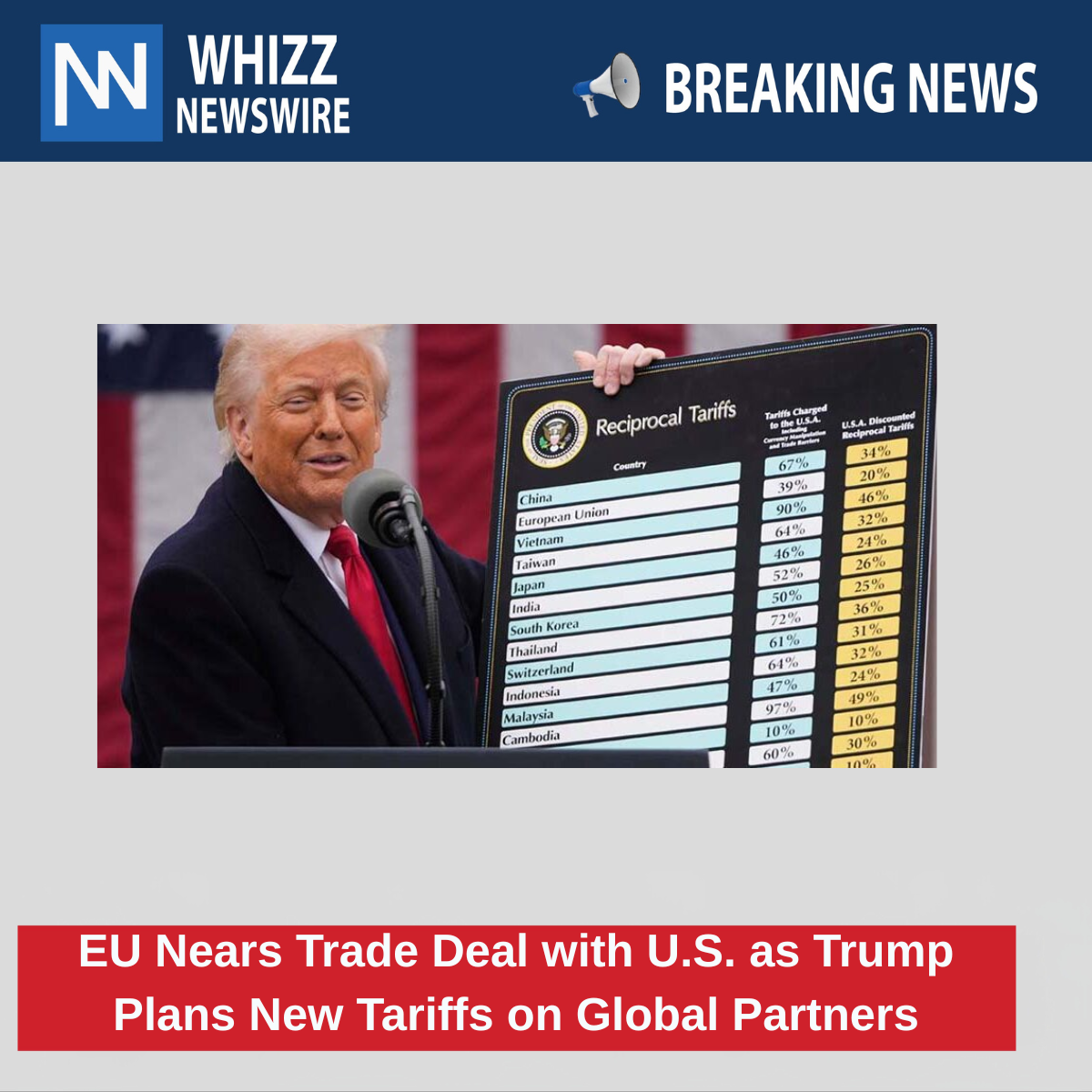Global trade tensions rise as new tariffs and talks reshape economic relationships
The European Union (EU) is closing in on a new trade deal with the United States, while U.S. President Donald Trump prepares to roll out more tariffs targeting other global partners. The announcements mark a significant moment in ongoing trade tensions that continue to affect economies around the world.
EU and U.S. Trade Talks Make Progress
EU officials revealed on Wednesday that they are optimistic about finalizing a framework trade agreement with the United States in the next few days. Maros Sefcovic, the EU’s top trade negotiator, said that both sides have made good progress and are working toward a deal before the extended deadline of August 1.
“I hope to reach a satisfactory conclusion, potentially even in the coming days,” Sefcovic told EU lawmakers.
Originally, the deadline for a deal was July 9, but both parties agreed to extend it by a few weeks to resolve outstanding issues.
Trump Signals More Tariffs Coming
While trade discussions with the EU are moving forward, President Trump is also preparing a new wave of tariff notices. On Tuesday, he announced plans to impose a 50% tariff on imported copper, along with new duties on semiconductors and pharmaceuticals. These new measures expand a broader trade war that has been brewing since early 2024.
Trump said he would release at least seven new tariff notices on Wednesday, with even more expected later in the day. He did not name the countries that will be affected.
“They treated us very badly until recently, and now they’re treating us very nicely. It’s like a different world, actually,” Trump said regarding the EU.
14 Countries Already Facing New Duties
On Monday, the Trump administration sent tariff letters to 14 major U.S. trading partners, including key suppliers like Japan and South Korea. The letters imposed tariffs starting at 25%, which will come into effect on August 1.
This move is part of Trump’s broader strategy to reduce America’s trade deficits and bring manufacturing jobs back to the U.S. However, many experts and political leaders are concerned about the long-term impact on prices and international relationships.
Europe’s Response: Cautious but Hopeful
While the EU remains hopeful about a deal, not everyone is convinced it will be simple. Italy’s Economy Minister Giancarlo Giorgetti said the talks remain “very complicated” and could continue right up to the deadline.
Still, signs of cooperation have emerged in recent weeks, with both sides showing a willingness to negotiate seriously. Trump has suggested he will inform the EU of expected tariff rates on European exports to the U.S. within the next two days.
Markets React Mildly, But Concerns Grow
Despite the aggressive trade moves, global stock markets have stayed relatively calm, and investors appear to be taking a “wait-and-see” approach. However, economists warn that these actions could have serious long-term effects on prices and trade relationships.
The Japanese yen weakened following the news of tariffs, while analysts say companies may soon start passing higher costs to consumers.
Tariff Levels Hit Historic Highs
According to the Yale Budget Lab, the average U.S. tariff rate is now 17.6%, up from 15.8% earlier this year. This marks the highest effective tariff level since 1934, during the Great Depression.
The Trump administration has promoted these tariffs as a way to raise government revenue. Treasury Secretary Scott Bessent stated that the U.S. has already collected $100 billion in tariffs this year and could reach $300 billion by the end of 2025.
In recent years, the U.S. has typically collected around $80 billion annually through tariffs.
“90 Deals in 90 Days” – But Progress Is Slow
In April, Trump launched a campaign promising “90 deals in 90 days”, announcing a range of country-specific tariffs and trade negotiations. However, only two agreements have been finalized so far — one with the United Kingdom and another with Vietnam.
Trump also mentioned that a deal with India is close, though no formal agreement has been announced yet.
Critics Say Tariffs Are Hurting Consumers
Not everyone is supportive of Trump’s tariff-heavy approach. Massachusetts Governor Maura Healey, a Democrat, criticized the policy in a public statement.
“President Trump was elected to lower costs, and all he is doing is raising prices and hurting our businesses,” she said.
Many economists and business leaders share these concerns, warning that high tariffs could lead to increased costs for U.S. companies and consumers, especially in sectors like technology, healthcare, and manufacturing.
Trade Uncertainty Still Looms
As the EU and U.S. move closer to a trade deal, the global trade environment remains highly unpredictable. With more tariffs on the way, businesses and governments around the world are watching closely.
While some deals are progressing, the long-term effects of these trade battles — especially on supply chains, inflation, and diplomatic relations — are still unfolding.
For similar content visit here




